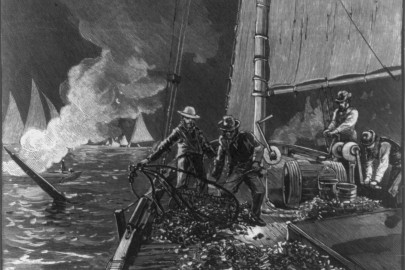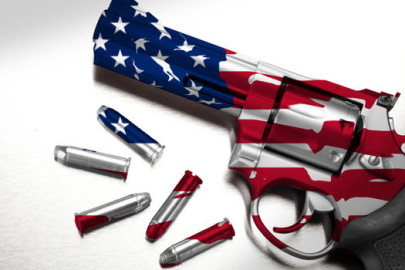Rita Byrne Tull explains her test for revealing the cultural divide between America and Britain…
First I must make it clear that I am not now nor have I ever been an imbiber of Coca Cola. So no statements made herein should be taken as either an endorsement or a critique of the aforementioned product. Phew! Now I’ve got the legal disclaimer out of the way I can proceed to say whatever I want about the noxious beverage that is responsible for the epidemics of obesity and diabetes in the United States, not to mention the plague of cultural imperialism tainting the globe with each shipment of the bright red aluminum cans filled with fizzing sugary liquid. But I digress. My subject today is how I stumbled upon a kind of Rorschach test for the cultural rift between Britain and America.
I first saw the film Dr. Strangelove in 1967 at the University of Sussex. It was the Age of Aquarius. Anti-war and anti-American sentiments were at fever pitch. There had just been an incident on campus over a guest lecture by the American Ambassador. Protestors threw red paint, which could be seen splashed on the door of the Porter’s Lodge for days afterward. Marxist theory was the intellectual fashion that underlay all discourse, tripping easily from the tongues of upper middle-class students who had never experienced a day of work in their lives. Dr. Strangelove hit all the right notes for this crowd of fashionably scruffy pampered socialists. American generals are portrayed as crazy buffoons, the American President as an inept cipher, and everyday Americans as trigger-happy cowboys ready and willing to bomb the earth into total annihilation in order to defeat their archenemy, Communism. Peter Sellers is in top form in a trio of roles including the title character, a mad genius German scientist whose crippled arm has a habit of snapping into the Nazi salute of its own volition.
The Sussex student audience was loudly appreciative of the film, laughing and whooping at all the delicious key moments. But there was one scene that absolutely brought the house down, eliciting by far the loudest, longest roar of laughter. Peter Sellers, in his role as the visiting RAF Major, is desperately trying to phone the President to give him the code to recall the rogue plane before it drops its bombs on the USSR. The only working phone is a pay phone, but he doesn’t have enough change to complete the call. He turns to an American soldier and orders him to shoot the nearby Coca Cola machine to get the coins out. Incredulous, the American responds “But that’s private property!” This line seemed to sum up all the perceived craziness of Americans, so mindlessly devoted to the sanctity of property that they couldn’t violate it even to save the entire world from annihilation! The laughter burst out with such force you could barely hear the machine gun fire as the American reluctantly obeyed the order, warning the Major that he would have to answer to the Coca Cola Company.
A few years later I saw the film again, this time in Berkeley, California. The last clouds of tear gas had only recently wafted away from People’s Park, centre of the Free Speech movement. The demographics of the audience were very similar to the Sussex audience, UC Berkeley students and counter-culture hippies. You could probably not have found a more radical group anywhere in America. Certainly the anti-war theme and satire of the military were greeted with enthusiastic laughter. I looked forward with anticipation to my favorite scene. The magic words were spoken, “But that’s private property,” and I joined in what I expected to be a gale of laughter. Utter silence in the theater, apart from my lonely, now embarrassingly too loud laugh. I choked it back and looked around in amazement. Why did they not find it funny, even my friends? I couldn’t wait to discuss this with them afterwards. It turned out the scene just didn’t make much of an impression on them at all and they were surprised that it was such a big deal for me. They found my account of the reaction in England weird. I realized they were so steeped in American culture they just couldn’t see it or question it as I, an outsider, could. It was a crucial moment in my understanding of how many unthinking assumptions we all make in our separate cultural worlds. In the decades since I’ve often thought of the Dr. Strangelove test as an essential measure of our cultural divide.
Then a strange thing happened. This weekend I went to the library and checked the film out on DVD. I wanted to watch Dr. Strangelove again to remind myself of the context of the scene before I wrote about it. There they were again, the bumbling British Major and the private property worshiping American. But this time I didn’t laugh. I found it unbearably sad. In the years since this was funny private property in America has become concentrated in fewer and fewer hands. In a religious nation dominated by Christians Jesus’s words “If you would be perfect, go, sell what you possess and give to the poor, and you will have treasure in heaven” (Matthew 19:21) have been warped into the Prosperity Gospel, a belief that God rewards the faithful with the riches of this world. And companies, Coca Cola among them, have garnered even more unbridled power with the recent Supreme Court decision granting corporations the same rights as persons. The ascent of money would seem to be complete.
But there are signs of a dawning realization that things have gone too far. Could the Occupy Wall Street protests spreading across the country mark the ascent of a new Age of American Enlightenment? This child of the Age of Aquarius certainly hopes so. I look forward to a time when the film that ends with a mushroom cloud is just something to laugh at again.












Correct Rita, the movie worked best in the context of its time, extra immediacy given by the first use of hand held cameras, the end product being the highlighting of the sheer stupidity of it all especially as Slim Pickens rode the bomb to its target, like Doc Holliday riding out to the OK corral. Kubrick’s finest and a cultural milestone in the second half of the twentieth century, its very own All Quiet on the Western Front. Sterling Haydens finest performance, bodily fluids and all.
‘The Sussex student audience was loudly appreciative of the film, laughing and whooping at all the delicious key moments.’
Did we really ‘whoop’ way back in ’67? And I thought it was a relatively recent affliction. Whatever it is, it’s an irritation too far.
I enjoyed the post, Rita. I’ll clap in appreciation, but I’m not prepared to whoop.
I’m sure you are right that we would not have dreamed of “whooping” – my use of the word is proof that I have been Americanized!
Rita, it’s interesting that the Sussex audience saw the film through the filter of Vietnam – I’m left wondering by your piece whether the Vietnam protests and the ideas around them didn’t in some way supersede the e.g. Aldermaston protests, the anti-nuclear thing. Was that your experience at the time?
I think the OWS movement represents more the latest manifestation of 60s envy on the part of some very incoherent middle class young people than the dawning of an Age of Enlightenment myself. File it under the Battle in Seattle, assorted young coves in Energizer bunny suits turning up at G7 groups etc.
Nice description of how it’s our attitudes that change rather than anything else.
I read a piece comparing the OWS movement to the Arab Spring. Will be interesting to see if it goes anywhere or fizzles out. Most revolutions have corruption and (lack of) accountability underlying them. The level of right wing attacks on the OWS shows they may be on to something.
“Monarchy degenerates into tyranny, aristocracy into oligarchy, and democracy into savage violence and chaos”.
Must get some tinned food in….
The Occupy Wall Street (and equivalents in Europe) are those amusingly aimless protests that always remind me of Fathers Ted and Dougal and their “Down with this sort of thing!”/”Careful now!”
There was a deliciously funny – for the Beeb – moment on a recent telly news report about the London protest – a shot of a paper with “Ideas for Change” written at the top, completely blank underneath.
It’s all turning a bit Lord of the Flies:
http://www.mercurynews.com/breaking-news/ci_19150644?nclick_check=1
And don’t forget this bit of awesomeness:
http://losangeles.cbslocal.com/2011/10/12/occupy-la-speaker-calls-ghandi-a-tumor-pushes-for-violent-revolution/
Prepare the tumbrels! Down with Gandhi!
Great article Rita.
Very well written.
Thanks, Rita, for another spot-on post about American and British cultural differences. I loved how you took aim at the obesity epidemic, corporate America, and a particularly virulent form of religious fundamentalism. Great post!
Oh, and having somehow never watched Dr. Strangelove, I will be checking the catalog for a copy.